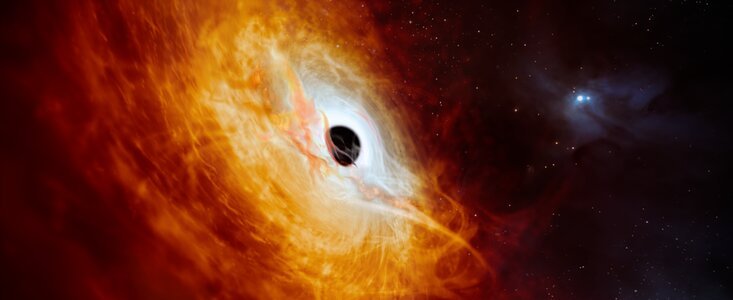Astronomers make breakthrough discovery with the help of machine learning

The European Southern Observatory’s (ESO) Very Large Telescope (VLT) has made an incredible discovery. A quasar has been identified, which is the brightest of its kind and holds the key to unlocking the mysteries of our universe. Quasars are the radiant cores of distant galaxies, fueled by supermassive black holes. This particular quasar has the fastest-growing black hole known to date, which is devouring matter with the equivalent mass of our sun each day. The lead author of the study, Dr. Christian Wolf, Australian National University, calls it "the most luminous object in the known Universe." It's named J0529-4351 and is so far away that its light took over 12 billion years to reach us.
The quasar has been hiding in plain sight, despite being present in images taken by the ESO Schmidt Southern Sky Survey in 1980. However, it was not recognized as a quasar until years later when the advanced instruments of the VLT uncovered its true nature. Machine learning algorithms and models are used to distinguish quasars from other celestial objects, but the identification of new quasars presents challenges. These models are trained on existing data, which limits their ability to recognize objects that differ significantly from what is already known.
The discovery of J0529-4351 highlights the transformative power of advanced technologies like machine learning and the importance of embracing diverse perspectives in scientific research. Dr. Wolf shares that he pursues quasars because "personally, I simply like the chase. For a few minutes a day, I get to feel like a child again, playing treasure hunt, and now I bring everything to the table that I have learned since."
The team of researchers who made this discovery comprised Christian Wolf, Samuel Lai, Christopher A. Onken, Neelesh Amrutha, Fuyan Bian, Wei Jeat Hon, Patrick Tisserand, and Rachel L. Webster.

 How to resolve AdBlock issue?
How to resolve AdBlock issue?